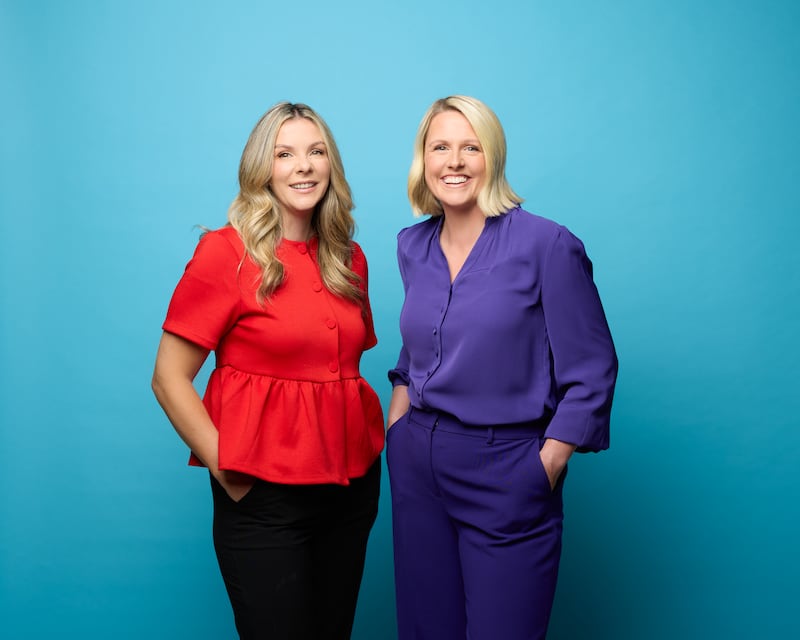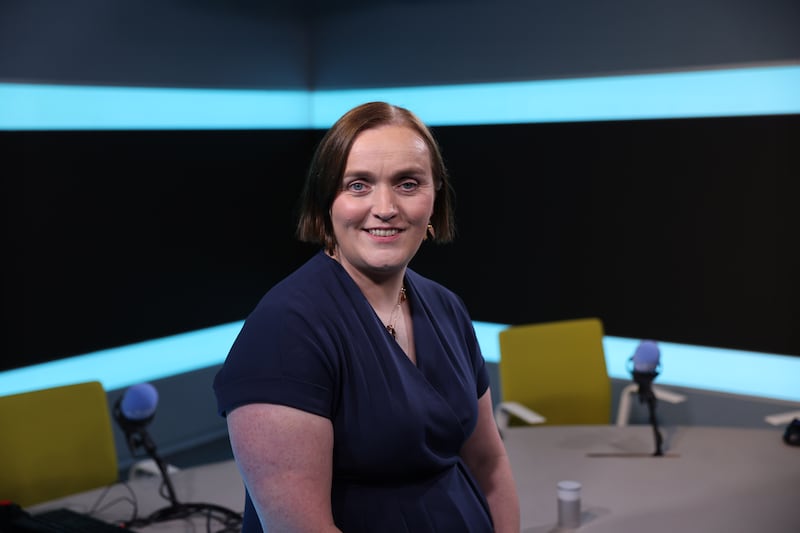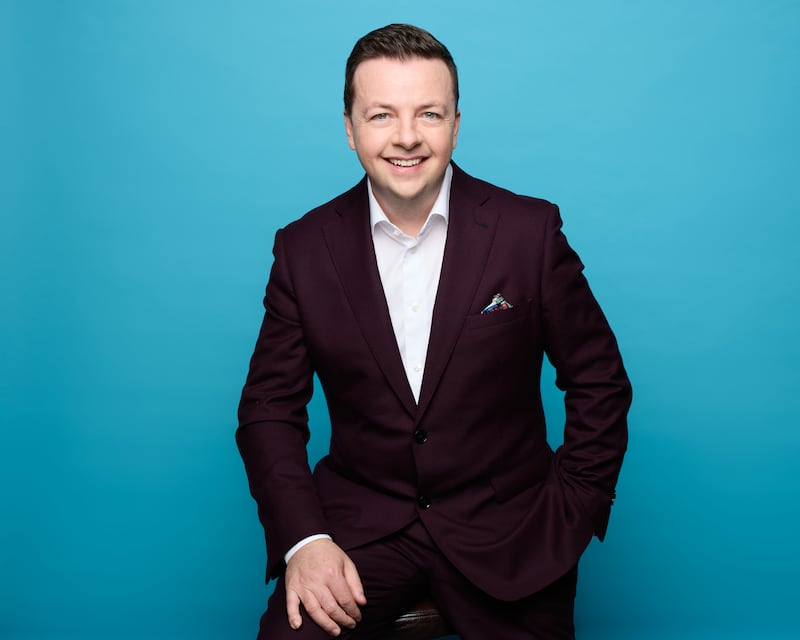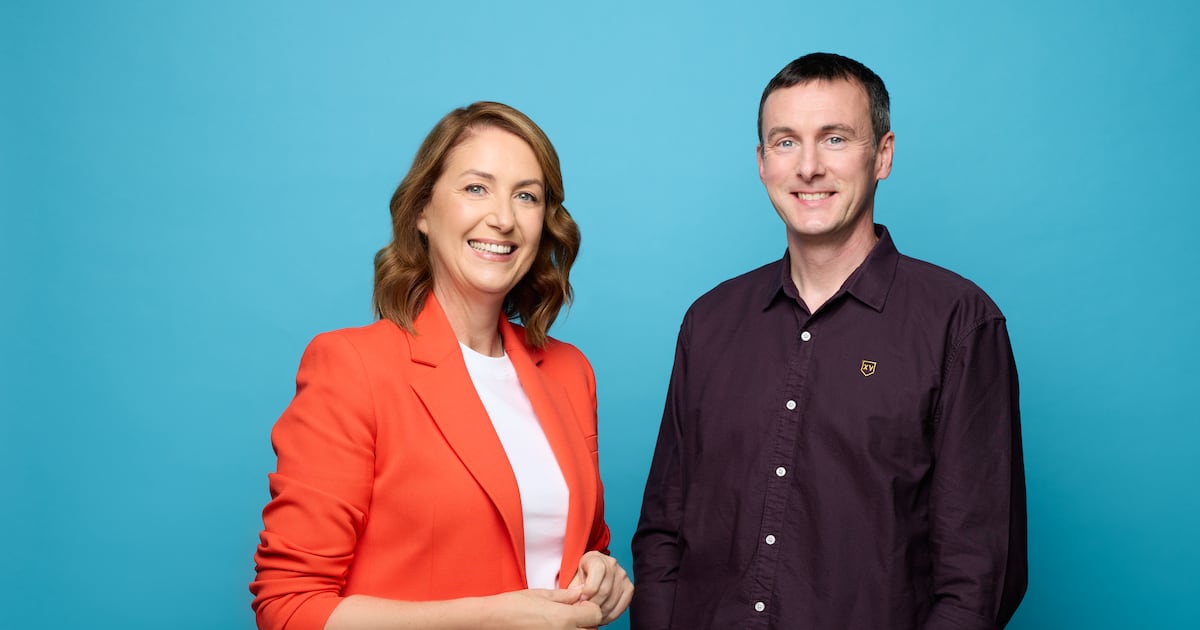One hundred years after forerunner 2RN made the first test transmissions of its new radio service, RTÉ will go live on Monday with its “refreshed” weekday schedule on Radio 1.
It’s the biggest overhaul of the station since January, 1999, with time slots as well as presenter line-ups being rejigged. But is this a dramatic “Newstalkification” of Radio 1 designed to attract younger listeners by being brasher and less formal? Or is it closer to a modest evolution of tried-and-tested formats that represents a missed opportunity for something more ambitious?
Here is what’s happening: David McCullagh takes over the Today show and starts one hour earlier at 9am, directly following Morning Ireland. Oliver Callan moves to 11am and doubles his slot to two hours. Kieran Cuddihy, a new voice to RTÉ, inherits the Liveline seat, while Louise Duffy’s music-led show moves to 3pm. And Drivetime, now presented by Katie Hannon and Colm Ó Mongáin, starts half an hour earlier at 4pm, finishing at 6pm to allow for an hour of Inside Sport, a new programme presented by Jacqui Hurley and Marie Crowe.
“This came out of the blue. We weren’t aware that this level of a shake-up was on the cards, actually,” says Hannon over Zoom.
So will their show be different from the one presented by Sarah McInerney and Cormac Ó hEadhra?
“We’re kind of grabbing the baton to some degree,” she says. “What we’re thinking about is the people we’re broadcasting to and the kind of headspace they’re going to be in. With our news and current affairs backgrounds, we have strong news instincts, so we want to keep that up by breaking stories and doing big interviews. But we’re also conscious that it’s the end of the working day and people might feel like they need a breather as well, so we want to have a bit of fun with it.”
 Marie Crowe and Jacqui Hurley will be the presenters of Radio 1’s new 6pm show Inside Sport. Photograph: RTÉ
Marie Crowe and Jacqui Hurley will be the presenters of Radio 1’s new 6pm show Inside Sport. Photograph: RTÉ
Listeners’ expectations have changed, partly in response to the popularity of more relaxed-sounding podcasts, with the result that radio is “no longer about just coming in and reading your script”, says Hannon.
“I definitely don’t think that’s a bad thing.”
Ó Mongáin, her co-host, expects some adrenaline will prove helpful when the on-air light goes red on Monday.
“Going live on day one of a whole new schedule is kind of nail-biting on one level but it’s exciting too. You do need that sense of jeopardy to get you into it when you’re live on air,” he says.
Have RTÉ managers told the duo what they expect from their show? “More listeners,” Hannon answers with a laugh.
“Yeah, exactly. That’s it,” says Ó Mongáin. “But there’s a definite confidence and patience there. They’re going to give it time to grow and gel, and there will be tweaks and changes on the fly as well.”
Across the schedule, the tone and format of the new shows won’t become clear until Monday.
Will new hire Cuddihy – until recently the capable and spirited presenter of Newstalk’s drivetime show The Hard Shoulder – introduce a millennial flavour to Liveline? Will McCullagh – whose goodbye gifts from his fellow Behind the Story podcasters were a mug and T-shirt bearing the words “I can do light” – showcase this lighter touch on Today? How exactly will Callan fill two hours of airtime?
 David McCullagh will present Today with David McCullagh on RTÉ Radio 1. Photograph: RTÉ
David McCullagh will present Today with David McCullagh on RTÉ Radio 1. Photograph: RTÉ
What we do know is that radio is a medium built on familiarity and routine and any adjustments at all tend to elicit an outsize reaction from listeners and commentators alike.
The day after the last major rearrangement of timeslots on Radio 1, prompted by the retirement of Gay Byrne, The Irish Times devoted the entirety of page six to the new schedule: “All is changed, changed predictably at RTÉ,” ran the lead headline.
Even by that stage, there were concerns that the average age of the station’s listenership was rising, that it was having to contend with new competitive threats that made it harder to recruit a younger audience, and that its most loyal listeners were also the ones wariest of change.
Much is now riding on Monday’s shake-up. After a turbulent 2023 and 2024 marked by corporate governance scandals, a fall in licence-fee income, declining rates of public trust, cuts to its content budget and plummeting staff morale, RTÉ could do with avoiding further reputational damage.
Radio 1 was not immune from the fallout from these crises, with the station obliged to replace Ryan Tubridy after the organisation’s new director general, Kevin Bakhurst, parted company with the presenter following a breakdown in trust in August 2023. And yet, in another indicator that Radio 1 is bigger than any single on-air voice, Callan slid comfortably into Tubridy’s old 9am slot, even managing to grow his audience.
The latest Joint National Listenership Research survey shows that Radio 1 reaches 1,376,000 listeners weekly and is the only station to have a weekly reach of more than one million. The station has a weekday peak-time market share of 20.1 per cent, a figure that has been relatively stable for years. (Today FM and Newstalk have 8.8 per cent and 7.6 per cent respectively.)
[ RTÉ Radio 1 most popular station as 2FM loses 24,000 listeners since last surveyOpens in new window ]
So this schedule revamp has not been triggered by any decline in listenership. Instead, it was the retirement of Liveline host Joe Duffy and the defection of Claire Byrne to Newstalk that sparked it, together with the arrival to Montrose of Patricia Monahan, the former managing editor of Newstalk, who Bakhurst appointed to the newly created role of RTÉ director of audio in 2024.
Monahan has understandably wanted to put her stamp on a schedule she will be judged by. Her first big call, which was to drop Ray D’Arcy, became front-page news. This was followed by a rushed-seeming reshuffle announcement that lacked key details such as who would present the new sport programme. McInerney’s next job remains unconfirmed at the time of writing, with RTÉ only saying she will be “a regular presence on RTÉ and Radio 1”. (Ó hEadhra, meanwhile, is set to host Late Debate.)
Monahan has denied that her strategy is to put a “Newstalk stamp” on Radio 1, saying she wants to take the station in a new direction without “trying to turn it into something that exists elsewhere”.
 Patricia Monahan was appointed RTÉ’s director of audio in 2024. Photograph: Dara Mac Dónaill/The Irish Times
Patricia Monahan was appointed RTÉ’s director of audio in 2024. Photograph: Dara Mac Dónaill/The Irish Times
As ever, there is a balancing act here: Radio 1, with its predominant focus on news and current affairs, lies at the heart of RTÉ’s public service mandate. It also brought in €15 million in commercial revenue in 2024, with RTÉ One and RTÉ2 the only services generating more advertising for the broadcaster. If it haemorrhaged listeners by alienating them, this would have a financial as well as a reputational cost.
“These are reasonably bold moves in terms of the shape of the schedule, but they are calculated,” says Niamh O’Shea, investment director at Core Investment, which plans marketing campaigns on behalf of advertisers. “For me, I think the proof will be in the pudding.
“We would absolutely be looking for them to maintain the audience figures they have now and possibly grow them, though we recognise they are already far ahead of their nearest rival.”
While it would be healthy for Radio 1 to “age down” its listenership, there is recognition, too, that this could be “quite difficult” to do. But bringing in someone “clippable on social media”, like Cuddihy to Liveline, should help, predicts O’Shea, who previously worked in RTÉ. Adding voicenotes – a communication method favoured by younger generations and a popular feature of several podcasts – to the show’s format is “something I could imagine them doing”, while there is potential, too, in the age of visualised radio, to post more video clips online.
 Kieran Cuddihy succeeds Joe Duffy in the Liveline presenter’s chair. Photograph: RTÉ
Kieran Cuddihy succeeds Joe Duffy in the Liveline presenter’s chair. Photograph: RTÉ
The challenge of recruiting new listeners is not unique to RTÉ, she says: “There is definitely a risk that younger audiences won’t find Radio 1, but that’s a problem for all stations.”
Perhaps the most intriguing change, according to O’Shea, is the introduction of Inside Sport at 6pm, a time of day when listenership starts to fall off.
“It could be an advantage to have a sport show starting at 6pm, as it means they’re getting in ahead of Newstalk’s Off the Ball at 7pm. The female presenter line-up also gives it the capacity to offer something different from its competitors.”
But the new Radio 1 schedule has also been criticised for being limited in scope, with RTÉ accused of failing to sufficiently distinguish itself from commercial rivals.
“The lack of imagination about what radio can be is so dispiriting,” says Dr Roddy Flynn, associate professor and chair of communications studies at Dublin City University. At the moment, RTÉ does “a good news and current affairs job”, while relegating more ambitious programming to the margins, he believes.
It’s not that the peak-time schedule has to offer “something as pointy-headed as Melvyn Bragg at 9am on [BBC] Radio 4”, says Flynn, referring to Bragg’s hosting until recently of “history of ideas” programme In Our Time, but it should include forms of radio, such as documentary and drama, that offer greater context and depth to curious listeners.
“That’s what I would like to see, a bit of curiosity,” adds Flynn, clarifying that by curiosity he doesn’t mean blathering presenters “asking if you can eat the green bits in crisps”.
 Oliver Callan, whose show on Radio 1 moves to 11am-1pm. Photograph: RTÉ
Oliver Callan, whose show on Radio 1 moves to 11am-1pm. Photograph: RTÉ
Programme-wise, Flynn notes, the only significant difference between the Radio 1 weekday peak-time schedule today compared to the early 2000s is that arts programming, in the form of Rattlebag, lost its post-Liveline slot in 2006. Arena was introduced in 2009 – initially at 7.30pm, before creeping forward to 7pm – and the show remains on air, though without a permanent presenter following the death of Seán Rocks in July.
Arena has long been audibly under-resourced compared to its Radio 4 counterpart Front Row, says Flynn, who thinks RTÉ’s financial struggles have also led to more conservative decision-making across the board at Montrose.
“There should be space to fail in public service media, because if you have space to fail, you have space to take risks. If that’s not possible in RTÉ, where is it possible in Irish media?”
How public-service radio should sound has always been contested. When 2RN, a service mostly dedicated to music, officially launched in January 1926 after its series of test transmissions the previous November, editorial decisions were generating dismayed letters to The Irish Times within months.
A century later, RTÉ will know that when the light goes red on Monday, every word uttered on the Radio 1 airwaves will still command substantial attention. And that, no matter how those first-day reviews pan out, is still better than being ignored.

